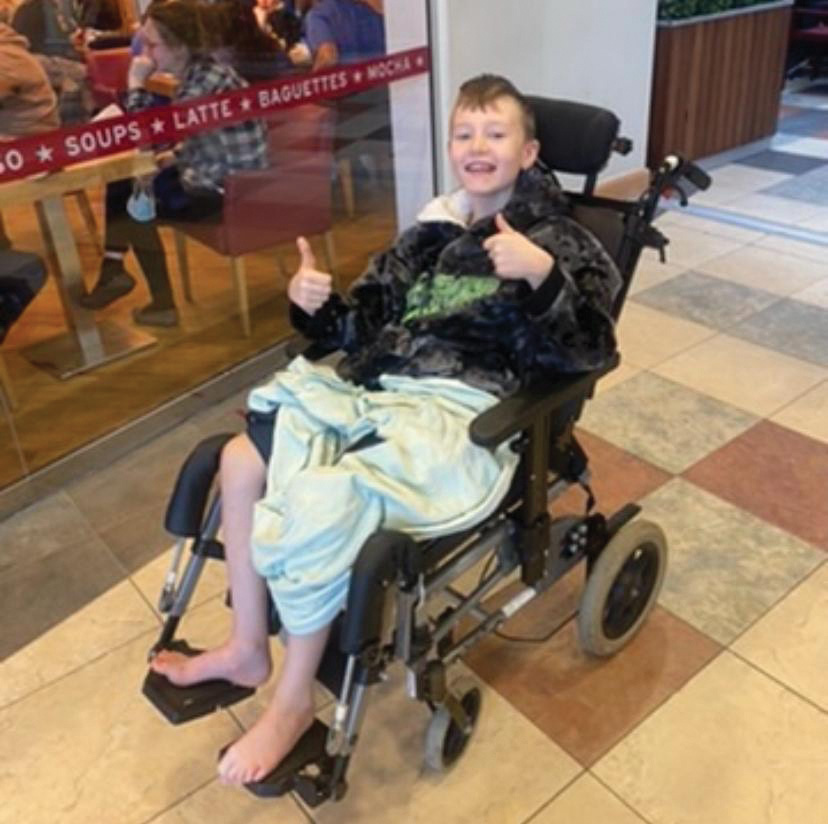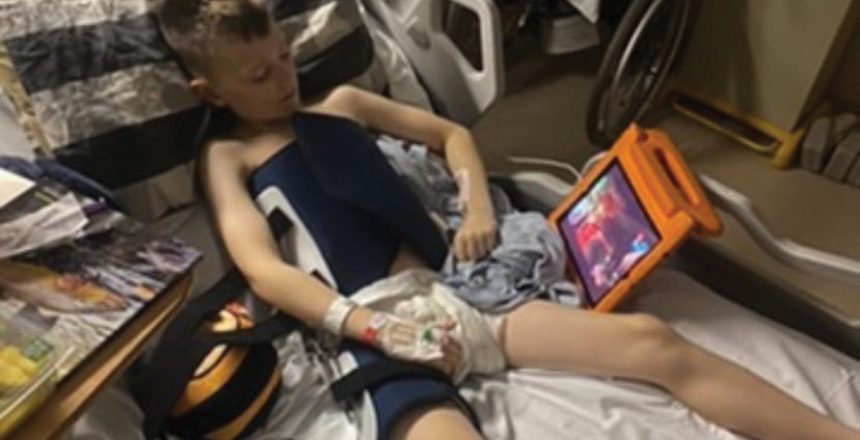

When Harris’ parents first noticed that his hips appeared misaligned in August 2022, they could never have imagined the dramatic journey that lay ahead. Harris was just ten years old when a referral to the John Radcliffe Hospital led to an X-ray, which revealed a large tumour in his hip joint. After a biopsy confirmed the diagnosis of Chondrosarcoma, the medical team embarked upon pioneering surgery to give him the best chance at a full and active life.
Chondrosarcoma is a rare form of bone cancer that develops in cartilage-producing cells, often within bone tissue. It is well known as one of the more common primary bone malignancies in adults, but in children and adolescents it is extremely uncommon – cases in young people account for less than 5% of all chondrosarcomas, and only around 10% of chondrosarcoma cases occur in children or teenagers. Due to its rarity in the young, diagnosis can be delayed or misinterpreted.
In the UK each year around 560 new primary bone cancer cases are diagnosed (including children, teenagers and adults), of which a significant minority are in people under age 25. Bone sarcomas overall account for fewer than 1% of all new cancer cases annually. Survival for bone sarcoma varies by subtype, age, and disease stage – but for chondrosarcoma in younger people, five-year survival rates are relatively favourable (in some studies around 70%) compared to other bone cancers.
Given the stakes, the orthopaedic and surgical teams opted for a bold, innovative operation. In October 2022, Harris underwent a 16-hour surgical procedure in which his fibula (in the right leg) was harvested and transplanted to replace his femur, after removing the diseased bone. The hip joint itself was preserved, with the goal that the fibula graft would gradually fuse, remodel and develop into a new, strong bone – thereby delaying or avoiding a hip replacement in a child still growing.
However, the path to recovery was far from simple. Harris’ new “femur” fractured during what doctors call “ghost recovery,” forcing a return to theatre for repair and a further period of traction. In the months and years since, he has had further smaller procedures, and will need ongoing monitoring and intervention as he grows. Throughout it all, however, he has remained resolutely positive, resilient, and determined. The medical staff continue to express astonishment at the speed and tenacity of his recoveries.
Crucially, as of now there is no evidence that the cancer has returned, although Harris will remain under oncology review for at least the next decade. His father, Paul Bradley, has taken up a challenge in his son’s honour to run 100km throughout November to raise awareness and funds for the Bone Cancer Research Trust (BCRT). You can connect with Paul on Instagram at @pbradley80841 – follow him for updates, join him on one of his runs, or to donate to his fundraiser click here —-> JustGiving page.
In the heart of Oxfordshire, we are proud that a local lad is quietly teaching us all about courage, community, and hope. Please consider donating a few pounds to Paul’s challenge or spreading the word in support of Harris – and of all children battling rare bone cancers.
Why support BCRT?
In recent years the charity has expanded its research programmes significantly. The charity also supports education, information, and infrastructure such as collecting the patient tissue samples that are essential for advancing understanding of rare bone cancers. For more information about the Charity and the work they do, visit https://www.bcrt.org.uk




